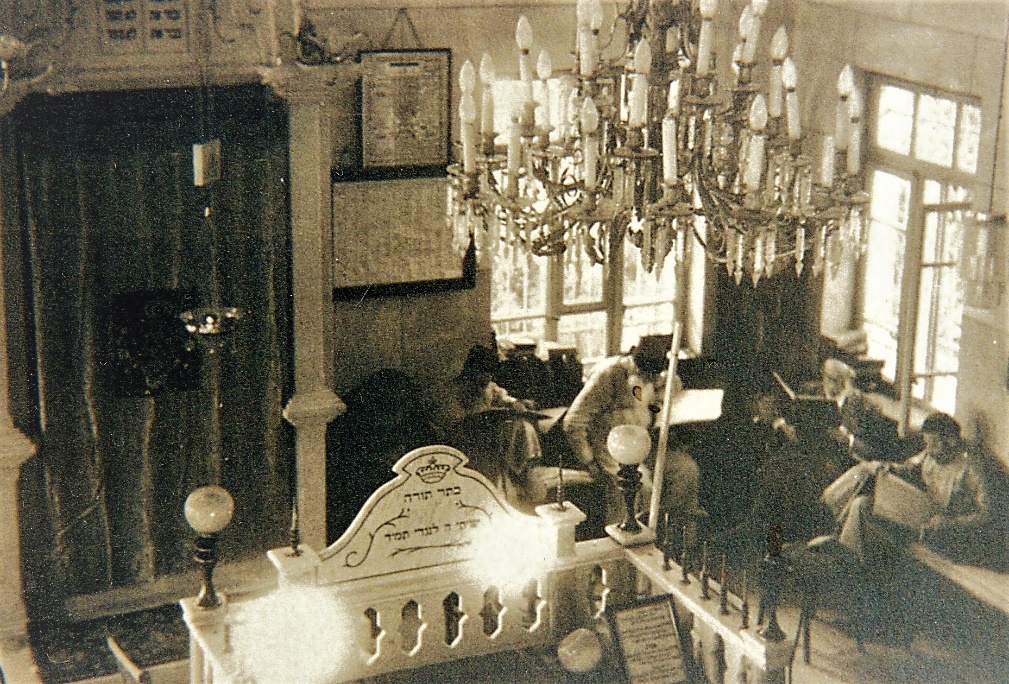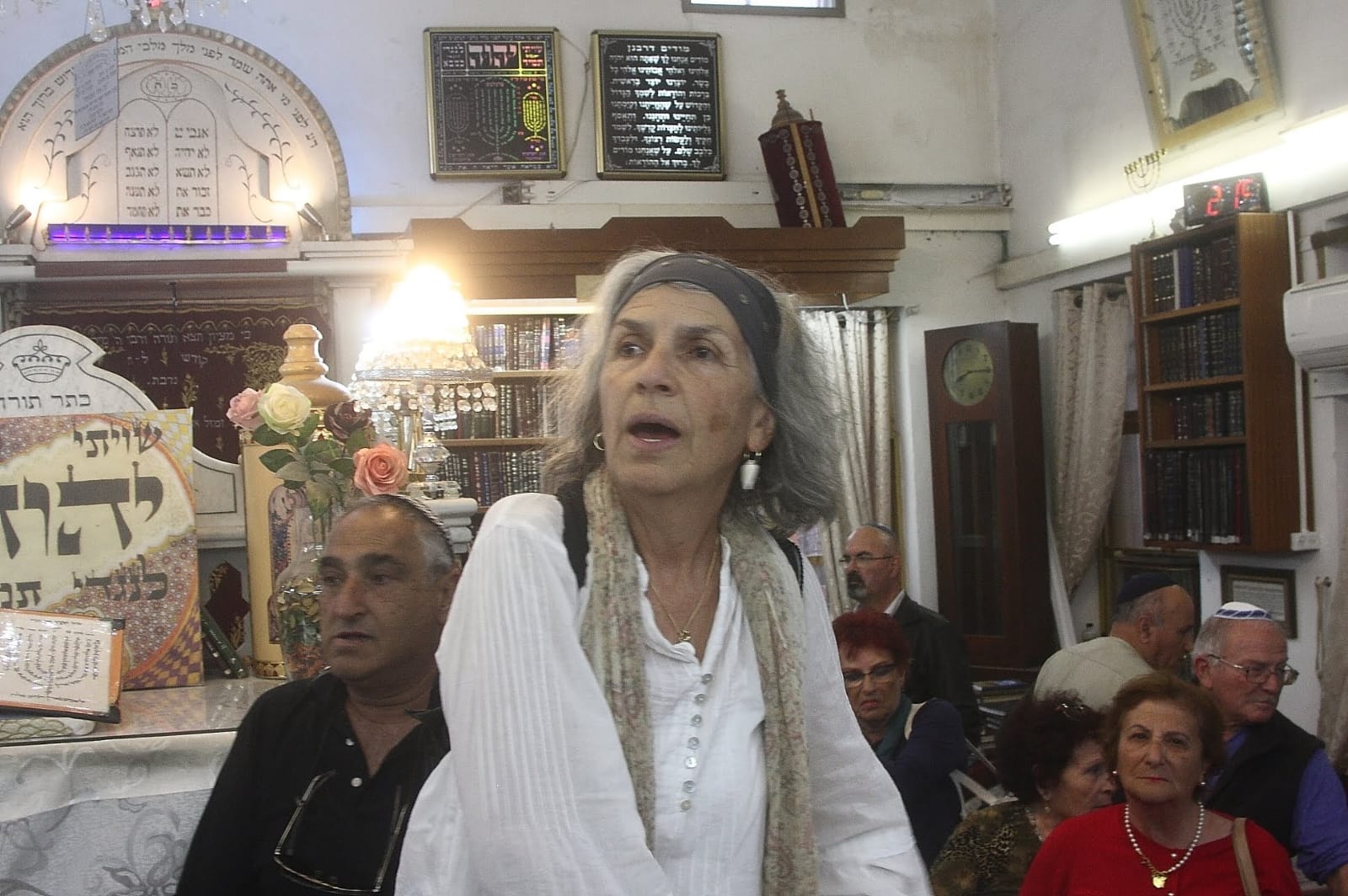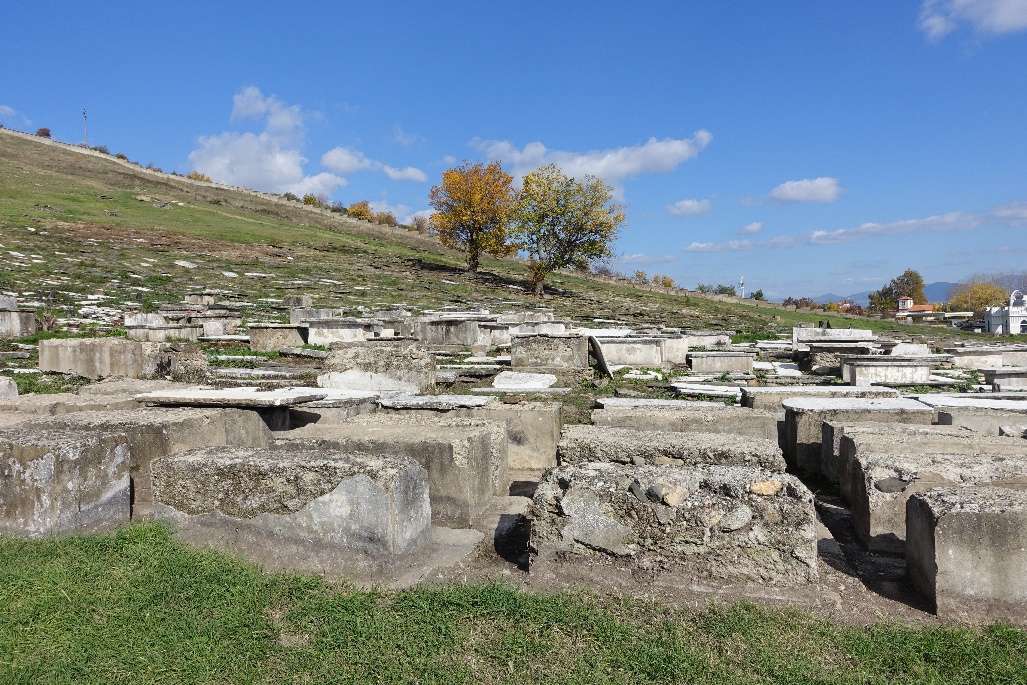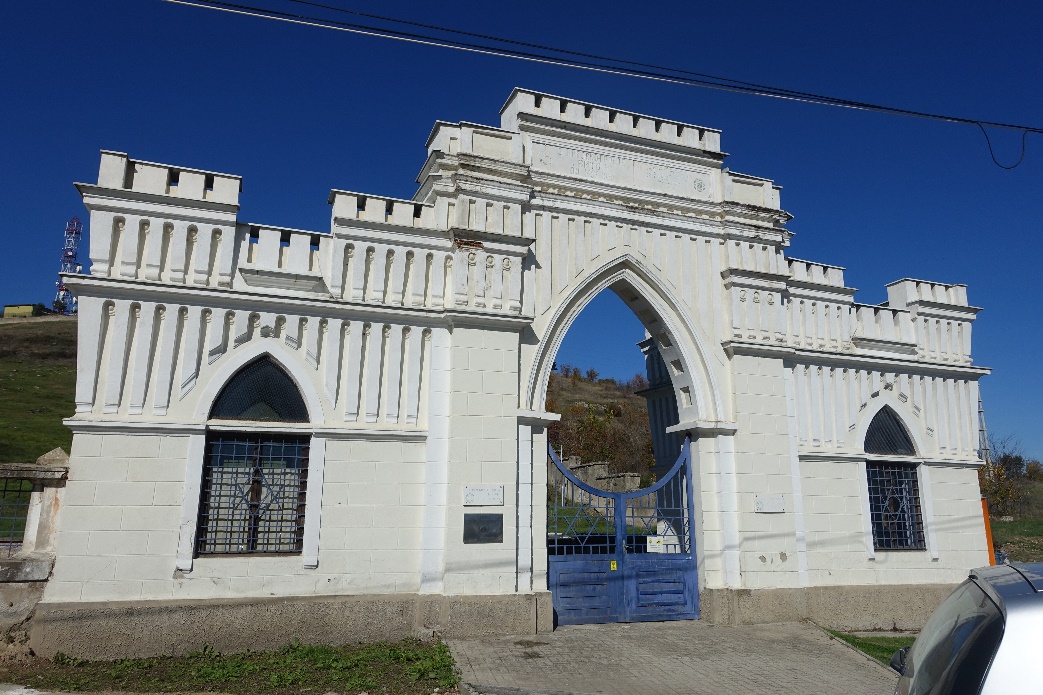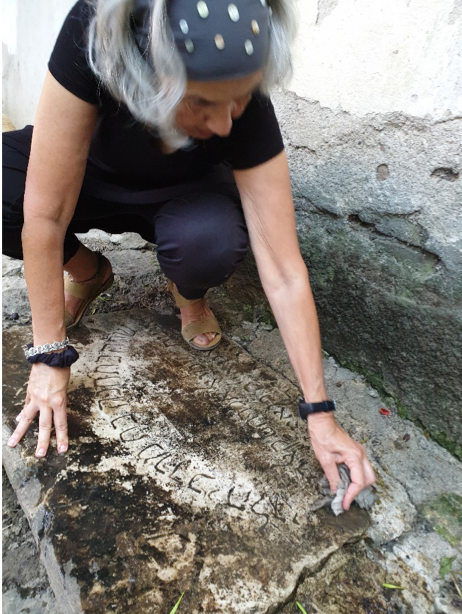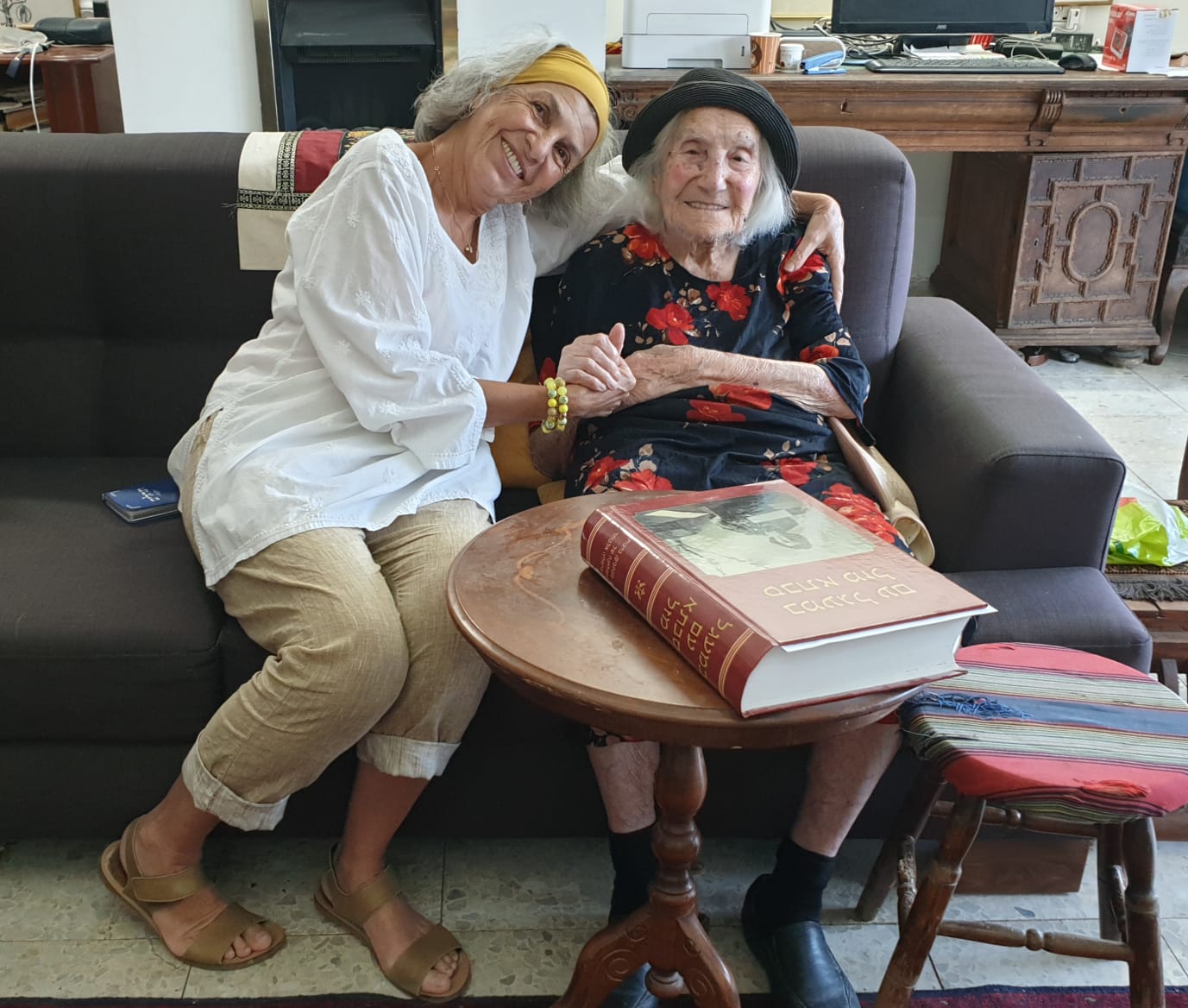Following their lost roots
Yael Unna of Jerusalem embarked on a gathering and documentation journey of all that remains of Monastir, a tiny Jewish community in North Macedonia, former Yugoslavia, almost completely exterminated in the Holocaust.
Among torn pictures, fragments of tombstones and inscriptions in Ladino, Unna succeeded in harnessing to the rescue operation more descendants, who are now trying to restore the holding in trust of the synagogue built by their ancestors.
The eve of December 9, 2018, eighth candle of Chanukah, will not forget everyone who passed on 26 Alfanadri Street In Jerusalem, not far from the busy market of Mahane Yehuda, and saw some 150 people singing “Hatikvah” and then sad and deeply disappointed, put a menorah on the stone wall, in front of the windows of the Yagel Yaacov synagogue, the candles were lit and then with trembling voices sang “Maoz Tzur Yeshuati.”Anyone who saw them in such a pitiful state couldn’t believe that only a few hours before, they were excited, making final preparations for the exciting evening. They were planning to light the menorah inside the synagogue built with money collected with great difficulty by their ancestors, members of the tiny Jewish community in the city of Monastir (today Bitola) in Northern Macedonia and those who succeeded to immigrate to the then British ruled Palestine. In Bitola-Monastir only some 3,500 Jews lived before the Nazis began killing Jews across Europe.How much wanted the descendants of the survivors from Monastir, who have established families and homes here in Israel to tell younger generations the history, about the unique customs of the small community, attach piece to piece memories and torn written documents and pictures to give life to those who are no longer, and who left after them only a crumbling cemetery in Bitola and one synagogue here, in Jerusalem.But the festive candle-lighting did not take place. The synagogue was built in 1932 and actively preserved Monastir’s unique tradition for over 70 years (the first synagogue they established in 1888 in the Old City of Jerusalem was destroyed by heavy snow in one of the winters). But those who now hold the synagogue and were originally allowed to study there forcibly did not allow the community to enter, although promised.
· · ·
Yael Unna (descendent of the Nahmias and Ashkenasi families from Monastir), a resident of Jerusalem, a devout woman, still remembers how her mother would say “I belong to a glorious Spanish community from the Balkans,” but did not share more information of her memories and longings to Monastir and its people, and those were quickly washed away into the stream of life that did not know this history. Only a few years later will Yael Unna find out that in the homes of many other descendants too, parents and grandparents left in silence the longing for the community that came to Monastir after deportation from Spain and Portugal in 1492. And she wouldn’t know it and so many other things about the community hadn’t she joined, almost three years ago, a tour to the city of Bitola-Monastir and saw with her own eyes the crumbs of Jewish life that were not wiped out and the remains of the remains – a Torah ornament (Rimon) and the like placed behind glass in a small museum there. Neither would she have realized the importance of the inscriptions hadn’t she discovered on the broken gravestones in the cemetery many of the family names that surrounded her childhood. For several months after returning to Israel she devoted her time to raise funds for the preservation of the so-called “Beit HaChayim” the “House of the Living” cemetery established already in 1497, five years after the expulsion. The inscriptions there are written partly in Hebrew and partly Ladino, the Spanish-Jewish language spoken by Sephardi Jews. She did this until she realized it was not the “Home the Living” that called her but life here, in Israel, demanded that she devoted her heart and her compassionate hands (Yael is also a hydro therapist) to resurrect an entire community.
· · ·
She didn’t know she would revive the community. She just set out on the journey, gathered name to name, address to address, traveled to each city and to every village where descendants to the Monastir community now live. She searched for the Albocher, Kamchi, Yosha, Honen, Yishai, Kalderon, Ashkenazi and many other families.Twenty years ago Yael lost her son Michael in a car accident and did not know how to collect the fragments of herself, and now she is a creator of life, glues together fragments and awakens memories buried deep in torn envelopes, in the archives, in bags, luggage, and shoeboxes which have put up dust and stored away in the midst of forgotten hiding places. Their owners don’t even know they hold powerful keys to the past.Yael, what, for example, did you find out?“Shorten the sheet to tell how many certificates, photos, and documents we found in people’s homes. For example, I visited Ziva Posner’s home in Rishon LeZiyon. She is the daughter of Moshe Yishai of Monastir who had a textile business. We found an audio track with her father’s voice telling that when a Jew reached the age of 60 they celebrated “Shroud Sewing Party” (Ladino: Murtajas, Hebrew: Tachruchim). They spread the linen cloth on the floor in the celebrant’s home, cut it while the man was lying on it and people throwing candy on him. He would then go out with the shroud folded in his hands and happily telling all he was now ready for the world to come. The custom is unknown from other Jewish communities.”
· · ·
Two years ago, the wish of many people arose that the descendants of the community meet. Hesitantly Yael organized the first meeting in Jerusalem. She didn’t know how many will come. In the end, the hall was crowded. “I didn’t know where I was coming to, but now I don’t want to leave,” one elderly attendant told her. Others came to tell that they want to join her on the re-creation journey of the community.
Three years ago, when Yael went to Bitola, she didn’t realize that she was going on a life’s journey. Now she is absorbed in it, clinging to it, not giving up or letting go, to herself and others on no drawer or envelope, no archive, no attic. “I’m not alone,” she emphasizes time and again. “Many take part in this project. We know now is the 90th minute to find materials. We want to find it all, whatever is possible.”
· · ·
Recently she was traveling to Bitola again. This time with her whole family, her children, and grandchildren. This trip pleased her and robbed her of a lot of mental resources. It will take more time to digest it all. And already her great concern and that of the community throughout their generations is intensifying – all their attempts of rapprochement with members of the people holding the synagogue were in vain and they had no choice but to approach the rabbinical court in Jerusalem to restore the trusteeship of the Yagel Yaakov synagogue, that the people of Monastir, hard-working people who collected penny for penny, and wrote in the trusteeship document that only their descendants could hold it.
On October 31, a hearing will be held on their case. Dozens of families, sons, grandchildren, great-grandchildren await the decision of the rabbis who sit in law. This historic opportunity the descendants of Monastair do not want to miss again. Many want to come to this debate. Me too I’ll be there and I’ll update here.
The response of Yeshuat Zion was unreachable despite many attempts.
Adapted from an article by Naomi Reichman, Yediot Yerushalayim local newspaper
Read more:
Much information about Monastir can be found in Mark Cohen’s book: Last Century of a Sephardic Community – The Jews of Monastir, 1839-1943, Foundation for the Advancement of Sephardic Studies and Culture, New York 2003.

